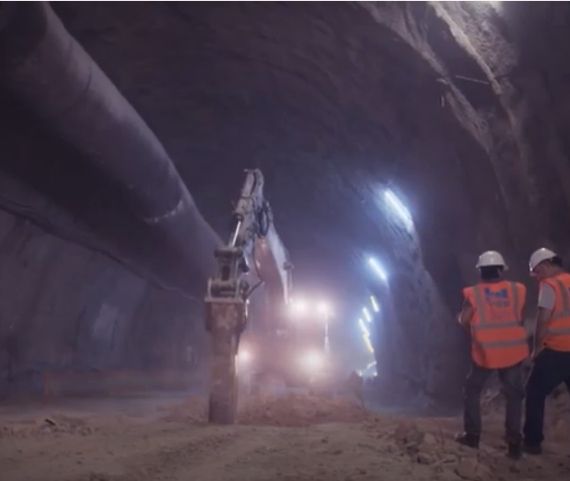This website uses cookies so that we can provide you with the best user experience possible. Cookie information is stored in your browser and performs functions such as recognising you when you return to our website and helping our team to understand which sections of the website you find most interesting and useful.
The power of real time decision making
This tunnelling joint venture was in the dark when it came to monitoring diesel engine exhaust emissions. With the data provided from the Pinssar system, the OHS team recognised the importance of real time decision making when protecting workers from a Group 1 carcinogenic.

The Challenge
The SMP4 Joint Venture were contracted to construct the TELT (Lyon to Turin) tunnel.
The SMP4 scope comprised of 9km of TBM and 3km of drill and blast works. The drill and blast section of the project was anticipated to produce an undesirable Diesel Particulate Matter (DPM) load and therefore represented a potentially unreasonable risk to workers. Previously, the monitoring regime consisted of real-time fixed gasses, monthly personal monitoring for crystalline silicosis and weekly air flow surveys. Based on their unknown anticipated DPM load, the OH&S department set out to investigate monitoring solutions which resulted in the purchase of the Pinssar solution based on its ability to produce real-time DPM data.

The Solution
The site undertook an initial 3 weeks monitoring program to establish the average base load, the Pinssar DPR data averaged 180 μg/m3 over this time. Operations were halted over the Christmas period, however the Pinssar DPR continued to operate, providing the data of just 10 μg/m3 for the period. Following evaluation of the pre-Christmas results, management decided to change the airflow and ventilation parameters. The results were immediate with the Pinssar data showing an average DPM load exposure falling below the desired 50 μg/m3 during operation.
Related case studies
The importance of monitoring and managing diesel engine exhaust emissions has never been greater. Progressive organisations around the world are deploying real time, continuous DPM monitoring solutions to protect their people and progress their projects. You can read more success stories below.
View allVisual data for management decisions
When this Health and Safety department could no longer just rely on assumptions about the levels of diesel emissions at site, Pinssar was able to provide management the information they needed.
Read moreA Change in Culture
A challenge faced by tunnelling contractors is that they have had no way of understanding in-situ diesel engine exhaust emission (DEEE) levels continuously in real-time.
Read moreUpdated British Standards in Construction
The latest edition of British Standard 6164 was released in , 2019 and includes the regulatory framework relating to monitoring diesel exhaust emissions in the Tunnelling and Construction industry.
Read moreWhy monitor?
Capturing information about DPM levels is a critical first step in order to make informed decisions to protect worker health.



